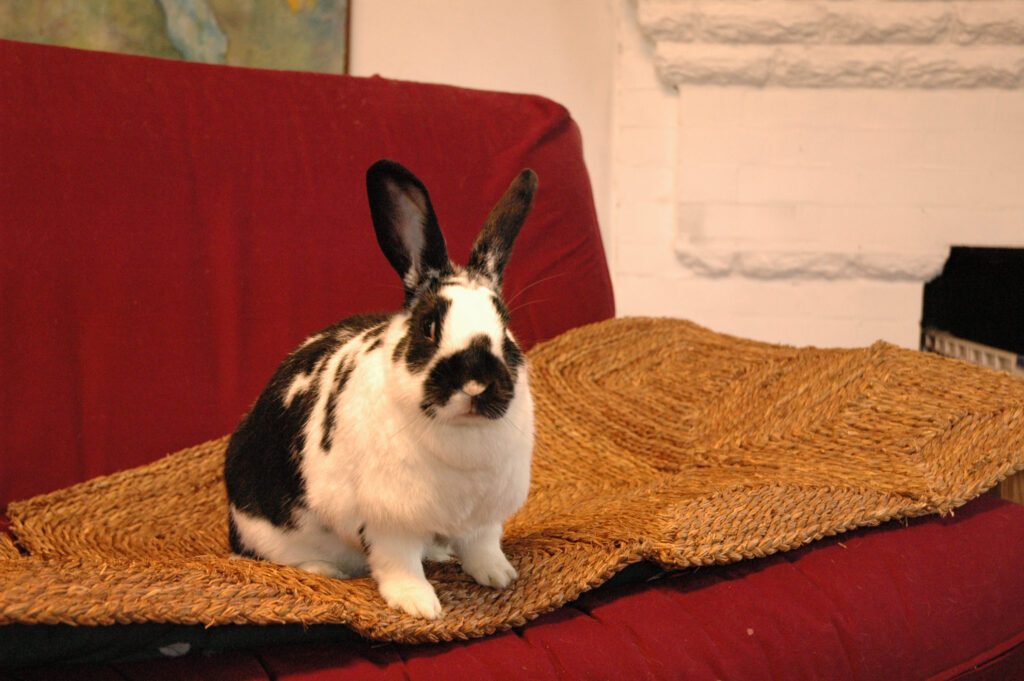Any part of your house that is exposed to a bunny resident should have protection in place. Move valuable books, magazines, and potted plants out of grazing range. All electrical cords should be enclosed in vinyl tubing or moved out of reach. Rabbits cannot resist nibbling on these long “vines.”
Cover-Ups
Anything that hides or encloses a forbidden article, we call a cover-up. Numerous items would adequately serve this purpose, but you will want to find some that blend in with your home decor. Here are some not too obtrusive solutions:
Chair mats can be purchased at office-supply stores in a variety of sizes. They cover problem areas of linoleum, hardwood flooring, or carpeting.
Seagrass rugs serve the same purpose as chair mats but are intended to be chewed and replaced. Wooden bumpers are thin strips of untreated wood ( furring strips), tacked onto a baseboard to protect the baseboard and serve as a chew block.
Plexiglas in 24-inch sheets can protect wall areas above baseboards without being too obvious.
Vinyl tubing is sold by the foot in hardware stores, and it comes in various diameters. With a sharp utility knife, cut the tube lengthwise and push the electrical cord inside.
Furniture arrangement. This is also a way to hide wiring. Block the access to the electrical outlets with a piece of furniture.
Blanket throws can protect against toenails and teeth when tossed across upholstery or beds. In some situations, you can use seagrass as a “throw.”
Repellents
The use of repellents has diminished over the years in favor of more pleasant alternatives, such as chew toys. Repellents are any of those odors or tastes that bunny finds repulsive. Pet repellents for cats and dogs sometimes work for rabbits. Check for safety of any product that you spray on the furniture. Is it safe to inhale or chew?
Prevention By Diversion
You can take preventive measures to hide forbidden items or make them undesirable, but the most rewarding prevention is the addition of activity and recreation. This is done through exercise, toys, and a stimulating environment. Equipment used for achieving these ends are shown in the following pages.

